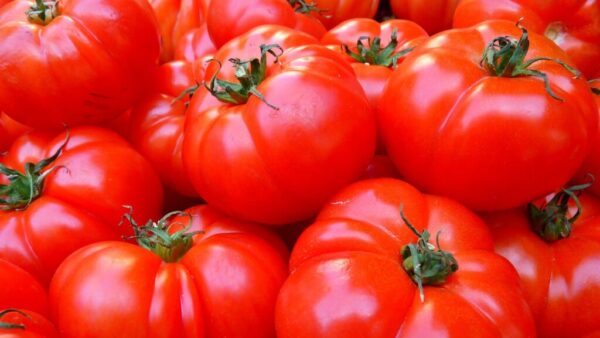How do seed companies stay ahead of what their customers want today and predict future demand? Communication—and lots of it.
Gauging consumer demand isn’t always an easy thing to do, regardless of who the consumer is. Whether it’s a farmer buying seed or a patron making a purchase at a grocery store, there is one universal factor: economics. A consumer trying to stretch the family budget wants a reliable supply of cheap, quality food. A farmer wants a seed variety that allows him to maximize productivity on every acre.
For seed companies, this is the starting point of the incredibly complex task of staying ahead of what their customers want today and in the future. “It’s a combination of art and science—trying to forecast what the needs of our customers will be in the future,” says Ben Kaehler, Dow AgroSciences’ general manager for U.S. seed affiliates.
“We can’t just turn on the faucet and produce more seed. We have to think two to three years ahead of when a grower is going to buy a bag of seed to make sure we have the right parent seed available to allow us to produce the right hybrids. It’s a lengthy and complicated supply process. Then throw in some challenges from Mother Nature—that really makes forecasting difficult.”
Dow AgroSciences uses multiple approaches to make those predictions, says Kaehler. In one approach, historical use patterns of customers and current usage of varieties and hybrids are considered when estimating future demand. In addition, the company talks to its customers to get their opinions. “We have formal qualitative and quantitative market research projects where we talk to growers and dealers to get their feelings on what they expect to use in the future,” says Kaehler. “We might conduct a blind survey, for example, and ask ‘What are growers using today’ and ‘Do they think they will change that use pattern and if so, how?’ That helps drive some of our decisions.”
“Farmer needs drive every product decision we make. Our customer is at the core of everything we do. To be successful as an agricultural innovation company, we need to focus our research and development investments on products that farmers want, and that can provide a competitive edge for our retailers.” —Ty Vaughn
Creating Dialogue
According to Ty Vaughn, corn product management lead for Monsanto, the company’s product development strategy is also driven first and foremost by the desire to help farmers increase yield while mitigating risk, which means two-way communication with farmers and retailers is essential. “Farmer needs drive every product decision we make,” says Vaughn. “Our customer is at the core of everything we do. To be successful as an agricultural innovation company, we need to focus our research and development investments on products that farmers want, and that can provide a competitive edge for our retailers.”
Monsanto accomplishes that dialogue in a number of ways, from partnerships between its retailers, farmer dealers and farmers to regular customer insight surveys and several annual Customer Outlook Sessions, where the company’s leaders visit with growers in the field. Farmers also partner with the company in on-farm trials and serve on advisory councils, such as Ground Breakers, New Product Evaluators in cotton and the company’s Grower Advisory Council.
Staying connected to grower associations, like the National Corn Growers’ Association and American Soybean Association is also important to understand what’s on farmers’ minds. “All of these customer engagements create an opportunity for farmers to tell us about challenges that new products could potentially address, and they also allow us to give our farmer customers information about our products that can help them make important decisions for their farms,” says Vaughn.
The End of the Chain
The requirements of end users, such as processors, the food service industry and consumers, can influence what varieties are developed, but it is also dependent upon the commodity type, and there still has to be good agronomic and economic reasons to encourage growers to grow certain varieties.
“The influence of consumer usage is different by crop,” says Kaehler. “For instance, Dow AgroSciences, through the Mycogen Seeds brand, sells Nexera canola in North Dakota that has a specific end use. It has a very unique oil profile and is contracted to be sent to certain crushers. The oil is called Omega-9 oil, and there are many restaurants that specify they want oil only from this type of canola. That demand creates contracting opportunities for growers, and has a tremendous influence on what a grower in that region chooses to plant due to this contract.”
It’s largely a different story in the corn and soybean commodity markets where the end use, whether it’s for grain, cattle feed, ethanol or for export, has less impact on what product growers are buying. “They are looking at hybrids which have the best returns, and ones they are most confident using in their farming practices,” says Kaehler.
The big gamble is whether the end product will create more value for everyone in the chain, and that can be the biggest unknown. “There is sometimes disconnect between what some end users say they want and what they are willing to pay for,” says Carl Peterson of Peterson Farms Seed in North Dakota. “One of the things that has been a stop-start movement across the grain industry is special-use grains or things like better-quality oils from soybeans and so on. When the purveyor of these things—and that is typically the larger companies—goes to food processors and says, ‘Do you want this better-quality oil,’ they all say ‘Yes,’ and then when they ask, ‘How much are you willing to pay for it,’ the answer is, ‘We don’t want to pay for it.’ So that has been a problem for those kinds of business models.”
“There is sometimes disconnect between what some end users say they want and what they are willing to pay for.” —Carl Peterson
Keeping Ahead of the Demand Curve
Peterson believes it’s more important to lead than to follow when it comes to predicting industry trends and consumer demands. “We need to be out front saying, ‘Here’s a new trait or a new genetic package which really fits your needs and you need to get on this,’ as opposed to saying, ‘What do you want?’” he says. “For example, this year we had drought in many areas and so growers have got that on their minds. There are certain varieties or hybrids that performed better under those drought conditions than others. But does that mean those are the varieties growers should go heavy on into next year? Nobody knows if there will be a drought next year.”
Peterson Farms Seed conducts large, multi-year replicated trials of many different varieties in different environments across the Northern Plains to determine what the best long-term solutions are for its growers and to help growers resist the temptation to reach for knee-jerk solutions to immediate problems.
“We try to look out across the industry at what agronomic traits and what biotech traits are coming and determine which of those are best suited to our marketplace,” says Peterson. “Since we don’t have any traits of our own, we are able to pick and choose across various providers to select what fits our customers. Part of the value that we bring to our customers is to moderate that tendency to just fight the last battle.”
In agriculture one thing is certain: there will always be another battle to fight. Fortunately, seed companies and their vast teams of scientists, breeders, agronomists, marketers and retailers are working to supply new an
d effective weapons.
Angela Lovell












